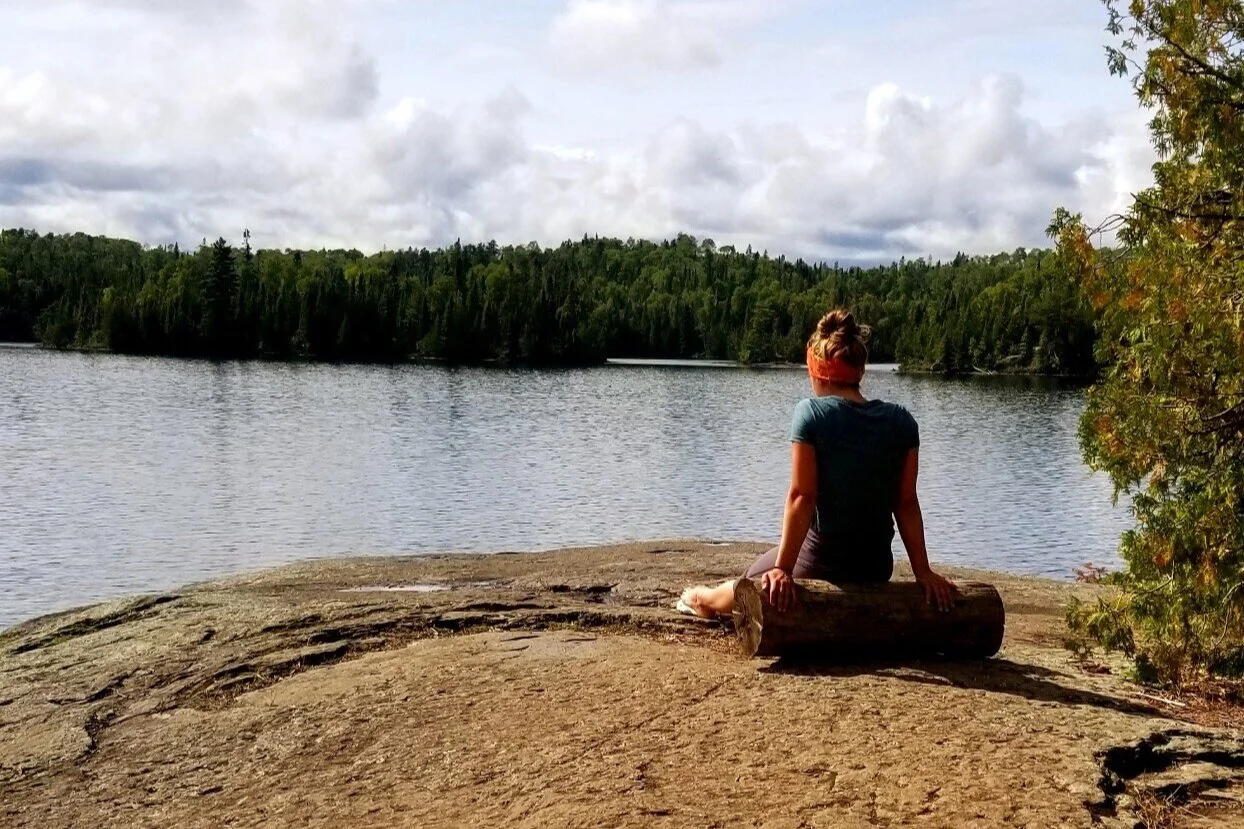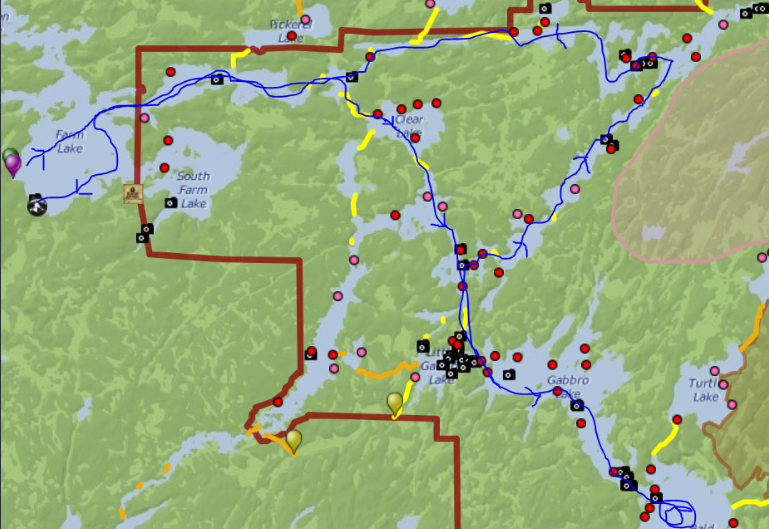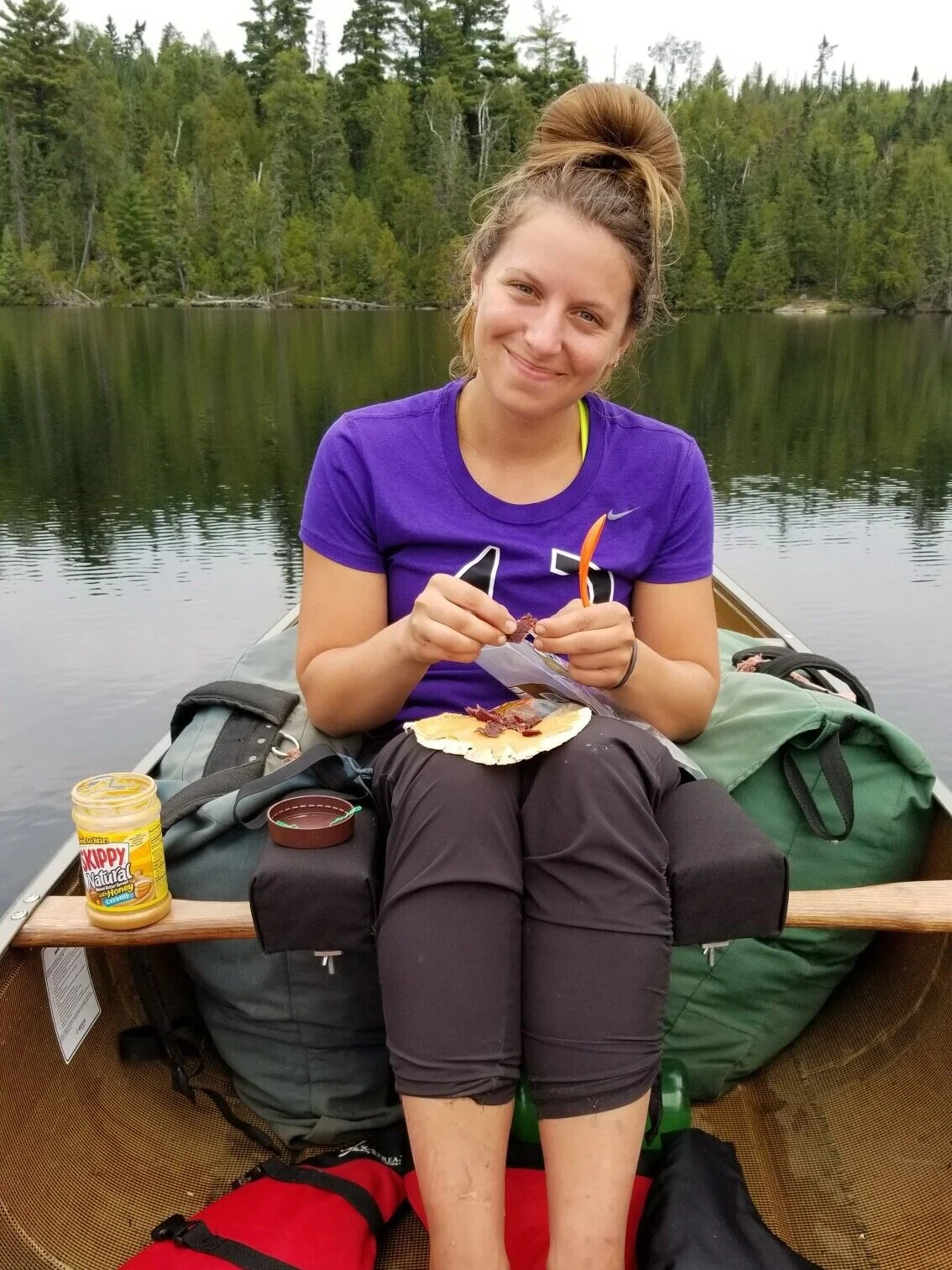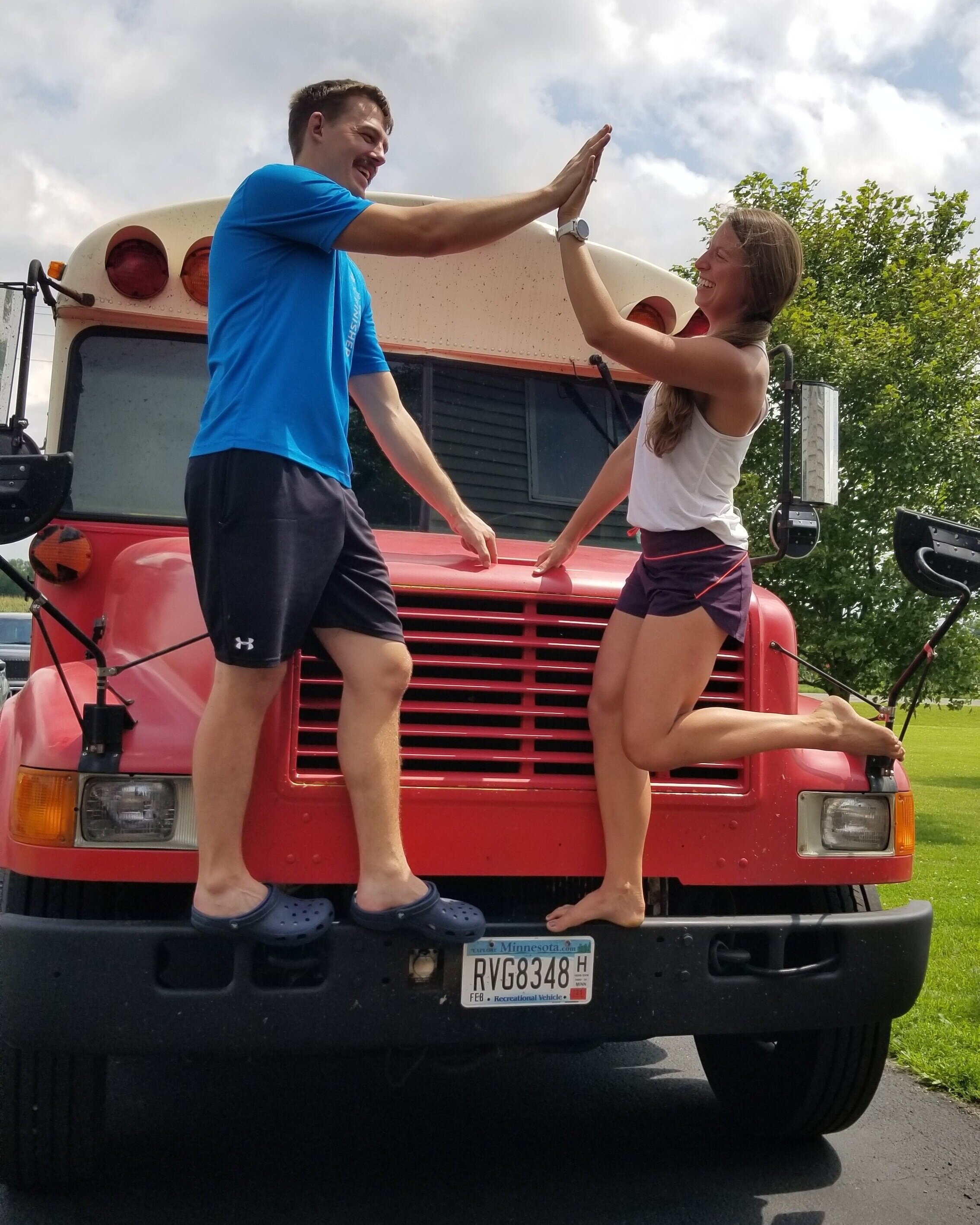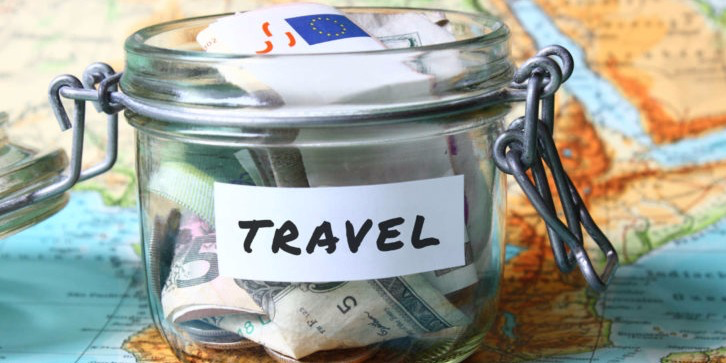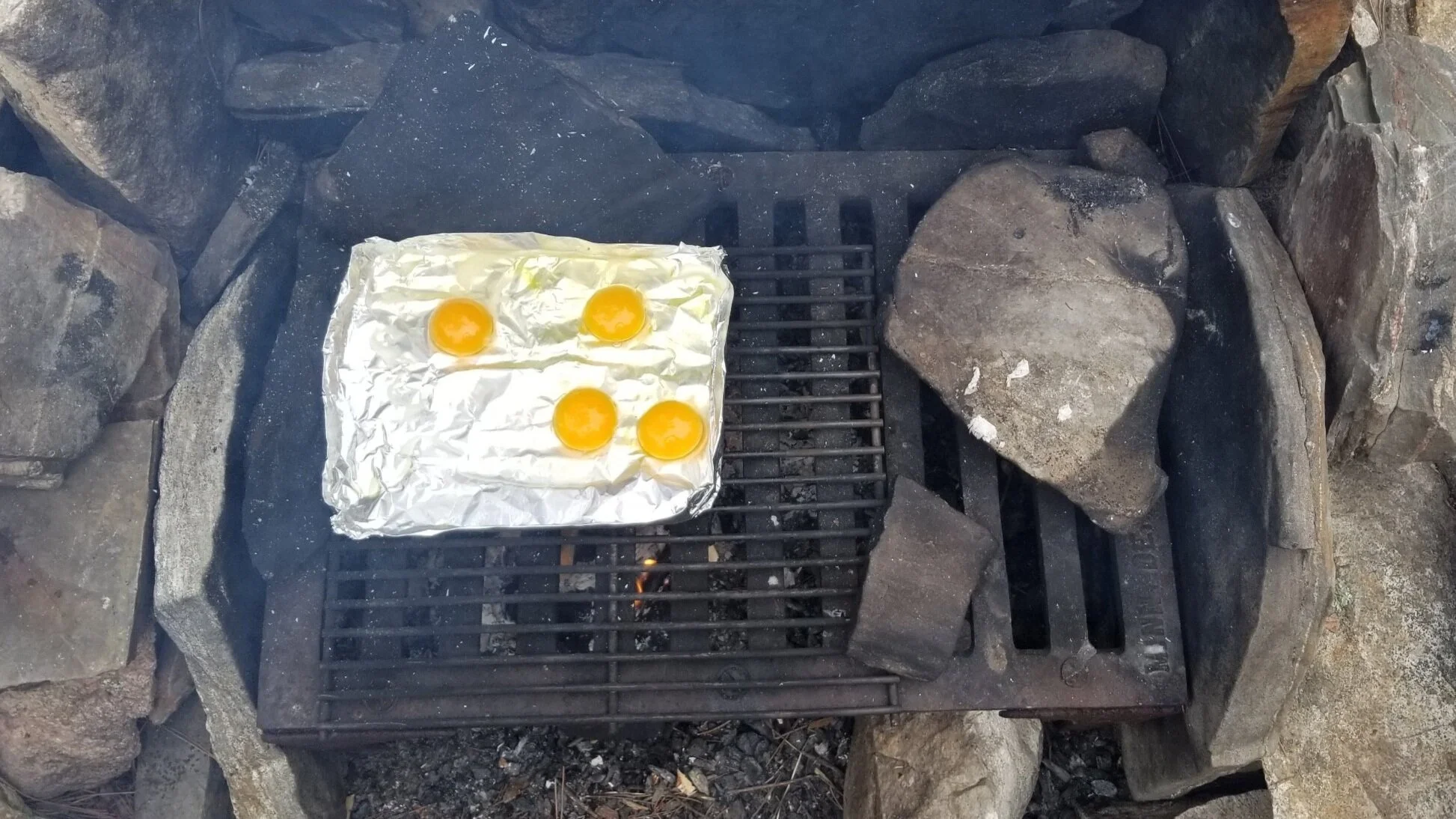How to BWCA Like a PRO
Okay pals, listen up. When it comes to the Boundary Waters, I sort of consider myself a veteran in the sport.
It all started at church camp…(that’s when you know it’s going to be a good story)…but seriously, back when I was just a little middle schooler, my church started taking trips up to the BW that my dad would guide. That turned into my dad introducing me and my sister to the best place in the world! I have continued to go, and introduce many others along the way, for the past 10+ years.
And nowadays, I consider this place my CHURCH. And that is called full circle.
One of my favorite parts about the northwoods is introducing others to the beauty of the place. Jake & my first trip to the BW 3 years ago was like our 2nd week of dating and maybe our 3rd date - see how a man handles the BW and you know if he’s a keeper ;) I have some experience training newbies to the rules of the woods and rain or shine, we always have a good time.
I only have the best things to say about this place and could ramble on for hours [see previous year blog posts about BW here and here], but that’s not the intent here. This is for those who ARE eager to plan their trip and are looking for some tips & tricks to hopefully get you a kick start and simplify the process!
What is the Boundary Waters / what makes it special?
The BW is a protected chain of lakes and river area in Northern MN, mostly based around interconnected water and land allowing visitors to switch between paddling and walking (or portaging) to troll around to different spots on the map. Most of the BW does NOT allow motorized boats. There are a small number of lakes where motorized boats are allowed, but it’s mostly around the BW borders. See wiki for more! :D
The BW rangers have created “campsites” for overnight visitors to set-up camp. A “campsite” is marked on the maps and consists of a fire grate and “toilet” (a plastic vault above ground). The BW offers a peaceful, authentic wilderness experience that comes with as much adventure as you are looking for! There have been years where in 5 days, I see less than 5 other people. BLESS.
How do you visit / how to pick an entry point?
To visit, you must enter through one of the many (50+ entry points). There are multiple “entrance cities” to the BW - Ely, Tofte, Grand Marais, etc. If you care location-wise, you can start there, but some locations have many more entry points that others as well. There are definitely “popular” places such as Lake 1 - 4 out of Ely - if you are pulling for one of these entry points, you will need to book early!
Other questions to ask yourself - how aggressive of a trip do you want? how much portaging are you okay with? big lakes or small lakes? how important is good fishing to you? do you want a loop or out-n-back? will you have kids with? how big of group are you traveling with?
A great resource is Paddle Planner and just start mapping out options! Once you have an entry point, you will need to ensure there is availability and secure a permit…
How to get a permit?
BW limits the # of visitors allowed to enter during their “peak” season which runs May 1 - Sept 30. There will not be a person standing at the entry dock checking your permit, but there are forest rangers out on the trails! I have never been stopped in my 12+ years, but this is NOT something to skimp on. They are fairly cheap - ~$18pp - and are just the right thing to do.
You will notice not all entry points allow the same # of permits - this is based on how many campsites you can get to from this point as they are trying to avoid having too many people in areas as you can only camp at designated campsites. It’s not a perfect system as they do not control exit, so they are just estimating a typical trip length.
If you are planning a weekend Jun - Aug, you will want to secure this well in advance - like 6 months. If you are more flex with week days or outside of peak season or going to less popular lakes, a couple months or sometimes even weeks will work if you aren’t picky with entrance points. Pick your ranger station or outfitter you want to pick the permit up at, and you are all set!
How long of a trip do you plan?
If you are a beginner, I would suggest anywhere from 3-5 days. This is a pretty typical trip; remember YOU steer your boat, so you can always exit earlier than planned if something is not going well. If you are going >5 days, you will want to get crafty with lightweight meals or depend on catching fish for food which many people do - this will greatly lighten the load.
How to plan a route?
Planning for the BW is very fun, IMO. Especially once you have all of the supplies, it’s even more fun. If you don’t, NO WORRIES. There are countless outfitters in the areas near the ranger stations that will be able to outfit your trip anything from a pan for the campfire to canoes to maps to sleeping pads, they have it all and you can do daily rentals.
When route planning, we typically look for entry points that allow us to do some sort of loop. We typically go pretty aggressive and are often packing up every morning and moving to a new campsite everyday (Note: this is a lot tougher to do with large groups & some may find this less relaxing) A great paddle day is around 8 - 10 miles; make sure you factor in portage distance as well!! For days when we portage 3+ miles, we probably won’t make it 10 miles of paddle. Also pay attention to how many portages there are, not only the distance. The get out of the canoe, unpack the canoe, portage, re-pack the canoe, get back in the canoe takes longer than expected. :)
Below is our 2019 route - this was a planned 4-day trip, but we actually did it in 3-days because of the weather - 30 paddle miles & I lost count of the portage miles :p
In 2018, we did a 4-day trip that was 23 paddle miles & 7 portage miles - that is a LOT of portage just to give you an idea.
Ya’ll….fire bacon and eggs is one of my favorite things in the world. Clearly Jaker’s too :)
REMINDER: we traveled both of these years in a group of 2 (plus a dog) and ONLY single portaged every portage.
How to plan a menu?
Food planning can be a bit tricky and I would recommend being diligent when planning for it because one of the last things you want to do is carry out food. I consider successful meal planning when you eat your last power bar on the paddle to the exit point :) The other last thing you want would be to run out of food…so let’s plan so that neither of those happen.
Things to avoid: really heavy stuff like 5lb bags of potatoes, canned things (because you have to carry out your trash & #heavy), extra meat.
You can also pay outfitters to pack your meals for you, but NO FEAR, YOU CAN DO IT. Below is a sample meal plan that is a pretty solid outline for our every year. We try to add in some variety and test some new “fire food”, but most of these are staples.
SAMPLE MENU: 3 night, 4 day Trek
Day 2 -
B: eggs & campfire bacon w/instant coffee
L: meat & cheese & crackers
D: instant mashed potatoes w/leftover sausage
Day 4 -
B: oatmeal w/instant coffee
L: nuts, power bars, whatever is left
D: EXIT meal - Dairy Queen? Jimmy Johns?
Day 1 -
B: Power bars (RX, Cliff, high cal bars)
L: PBJTs :D
D: Sausage & couscous
Day 3 -
B: oatmeal (packets are easy!) w/instant coffee
L: PBJT* (the fan fave!)
D: pad thai MRE
Ya’ll - fire bacon and eggs in the BW is nothing like anything you’ve eaten. You can see the joy in Jaker’s face.
*PBJT = peanut butter jerky (beef) tortilla - see below for one in the making.
NOTE: make what you will eat. Leftovers are a pain in the BW; you will either want to bury them or go huck ‘em in an island without any campers on it.
Note: cold food aka meats - we bring a small cooler or essentially a lunch bag for our cold food. If you put your food in there frozen, we typically plan to have it eaten by evening of Day 2 as it will be all of the way thawed by then. In the past, we have also taken dried ice and then, we were able to keep meat cold for ~4 days.
What about the snacks? Always consider the snacks…
Trail mix
S’more stuff
A small bag-ful of Peanut Butter M&Ms for rewards
Jiffy pop campfire popcorn
Protein balls
Drink flavor packets!! Fav: Nuun tablets (you’ll esp want these if you are boiling water or using Iodine tablets - trust me)
Pistachios (for the paddle)
Sunflower seeds (also for the paddle)
What about gear??
Okay, okay, you do need some of this, too to be successful. It’s not only about showing up with a permit or it can be if you work with an outfitter and make it that way. But there is a way to simplify this process! In the “appendix” of this blog, I included a suggested gear list as well as a packing list for personal items.
How to carry it all!?!
My friends, so many people go wrong here and it pains me to the core. There are only a handful of “right” ways to portage and pack for the BW; this is IMPORTANT. Double or triple portaging is really not fun, so be efficient. The secret to BW is smart packing - Duluth packs. They are huge which means you have to compartmentalize inside if you want any sort of organization. Waterproof bags, Ziplocs, and garbage bags are all great resources for compartmentalizing the bag.
TIP: carabiners can be super handy. See water bottle trick below!
The rule I ALWAYS follow: # of Duluth packs ≤ # of people.
This is not a trip to overpack on. The last few years, the “pack” has been Jakers, myself, and the dog and all of our gear, food, and cloths fit in 2 of these packs. THE WHY: if you only have as many backpacks as you do people, you can ensure SINGE trip portages. So I will say this is our number 1 rule because we plan aggressive routes. We like doing challenging large loops, but we also don’t fish and that is a fair amount of extra gear in itself.
““It had nothing to do with gear or footwear or the backpacking fads or philosophies of any particular era or even with getting from point A to point B.
It had to do with how it felt to be in the wild.””
I hope this Q&A style planning guide is helpful for you adventure-seeking-nature-enthusiasts. :D Get out where the reception is weak, and listen to the nature; sweet music to the soul.
Peace & outdoor love,
Wilderness Jen
**Enjoy the #throwback pic below circa ‘09-’10 - you welcome. :D
APPENDIX: BWCA PACKING LIST FOR PROS
TOOLS / EQUIPMENT
Sturdy, compact Tent
Canoe w/PFDs (come with rentals)
Tarp (x2)
Duluth packs (1pp)
Sleeping bags (check the weather to make sure yours is appropriate!)
Sleeping mats (not required, but if cold weather, V.helpful!)
Official BW map (do NOT just print something off the web - bad idea!)
Hatchet (can also forage, but this is hella nice for good fires)
Camp stove (we have gone without this, but it’s SO nice to have, esp. if rain is in the forecast)
Small pot (3-5 cup volume)
Matches / lighter
Fire starter, not essential, but can be helpful if it’s wet
Head lamps (essential!)
Water filter (we have a Sawyer and it’s awesome)
Iodine pills to treat water (more emergency if filter breaks)
Rope (at least 20ft for hanging your food)
PERSONAL CARE
Hiking shoes OR just CROCS (for the pros - wet/dry shoes are essential)
Night sleep outfit (do not mix with day-fits, leggings & sweaty)
Rain jacket
Hiking Pants - waterproof (x1 - get used to re-wear)
Shorts / leggings (x1-2)
Underwear / boxies (1 / day)
Socks (1 / day)
Sports bras, or let the girls loose
Waterproof bags (for clothes and maybe even food)
Bug spray (w/deet)
Sunscreen
Pocket knife
DUCT TAPE (saves everything)
Day pack -smaller backpack for hikes
Toilet paper
Paper bowls or plastic and be prepared to wash them
Hot drink mugs (if you coffee)
Nalgene bottles or other H20 holder
Tin foil
Garbage bags
Knive/sporks
Camp suds (biodeg)
Hand sanitizer
First aid kit - Benedryl, allergy meds, eye drops, ibuprofen, pepto (you never know…)
ITCH CREAM (deserves its own line item - essential!)
Cribbage/cards
Notebook w/pen
Extra Ziploc bags!
Long sleeve, warm (x1)
Sweatshirt (x1)
Tanks / Ts (a couple)
Bandana (obvs)
Hat
Contacts / meds / personal things
Toothbrush & paste
Body wipes
Biodegradable shamp, if you’re gonna lake shower
Towel, micro-fiber works


